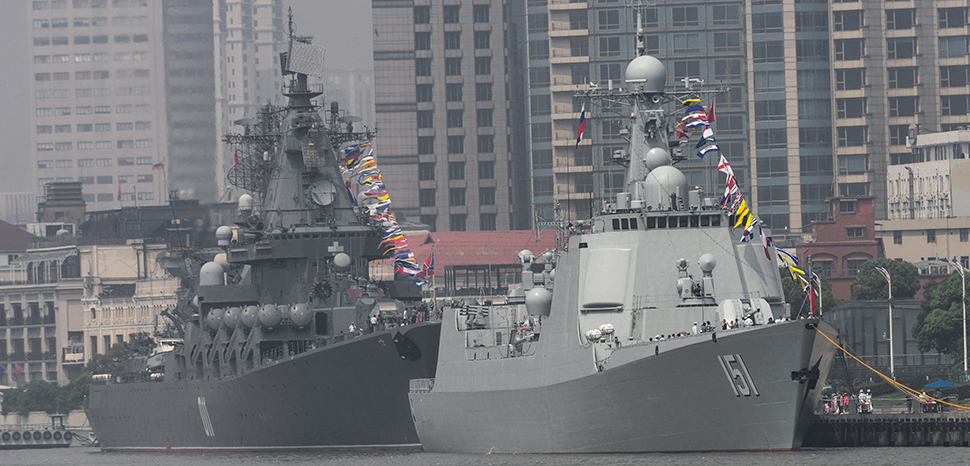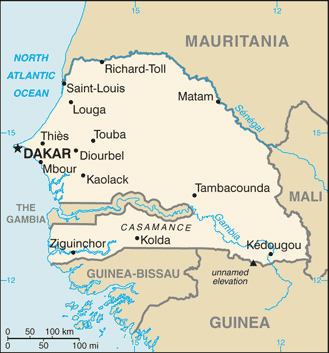Summary
In November, the US Congress received its annual defense department report outlining military and security developments in China, as mandated by the 2000 National Defense Authorization Act of 2000. The report mainly focuses on the technological aspects of the People Liberation Army’s ongoing expansion and modernization, though areas of engagement and cooperation are also highlighted. However, such examples are few and far between in this most recent iteration, which broadly paints a picture of a military balance that is rapidly shifting toward parity between the two global powers.
Background
Strategy and foreign policy
The report doesn’t pull any punches in describing China’s long-term goals and foreign policy. Beijing’s objectives are openly dubbed ‘revisionist’ insofar that they seek to overturn the present rules-based international order under the pretense of enacting ‘the great rejuvenation of the Chinese nation.’ Interestingly, and in a departure from past reports, the 2021 iteration notes that China views the international system as not just a competition between powerful nation states, but opposing ideological systems as well.
A section of the report is devoted to China’s Military-Civil Fusion Development Strategy, which is a broad plan to make the social and economic spheres also serve the objective of national rejuvenation. More specifically, this strategy involves: 1) fusing the defense industrial complex with the civilian industrial base; 2) integrating technological developments in the military-civilian domains; 3) cultivating talent between both domains; 4) leveraging civilian construction for military purposes; 5) leveraging civilian logistics for military purposes; and 6) expanding the national defense mobilization system.
In terms of defense strategy, China pursues an ‘active defense’ concept and seeks to create a ‘world-class’ military by 2049. Active defense, as defined by the CCP and PLA, is somewhat of a paradox in that it can involve pre-emptive attacks if they’re ultimately deemed to be in China’s interest; the ‘defense’ aspect lies in the preference of avoiding conflict whenever possible. Overall, armed forces modernization and planning efforts remain squarely focused on area-denial along China’s periphery, which seeks to repel a ‘strong enemy,’ presumably the United States, in the event of a conflict over Taiwan.
PLA military bases overseas
In an effort to expand its global power projection capabilities, Beijing is seeking new military bases in Asia and beyond, adding to its preexisting facility in Djibouti. Such bases would support a variety of capabilities, including naval, air, ground, cyber, and space power projection. Some countries that are cited as possible sites include Cambodia, Thailand, Myanmar, Singapore, Indonesia, Pakistan, Sri Lanka, UAE, Kenya, Seychelles, Tanzania, Angola, and Tajikistan.
PRC influencing operations
A section of the report is devoted to PRC influence operations, which ‘target cultural institutions, media organizations, business, academic, and policy communities in the United States, other countries, and international institutions, to achieve outcomes favorable to [China’s] strategic objectives.’ Such operations are overwhelmingly intended to massage public opinion in a way that synergizes with Beijing’s favored narratives, and are arguably facilitated by the open nature of democracies. The report also notes the PLA’s longstanding ‘three warfares’ concept, comprised of psychological warfare, public opinion warfare, and legal warfare.
PLA Army developments
The report notes that the PLA accelerated its training and fielding of new equipment through 2020, despite the negative impacts of the COVID-19 pandemic.
Key developments include:
- Fielding PCL-171 120 mm and PCL-181 155 155 mm self-propelled howitzers, as well as the field testing of the Z-8L heavy-lift transport helicopter.
- Holding extensive joint training exercises through 2020, primarily focused on improving the realism of training conditions.
- Tanks remain a laggard in terms of military modernization; around 40% of the PLA Army’s tank force is between 20-40 years old. Infantry brigades also still use outdated equipment.
PLA Navy developments
The PLA Navy continues to feature prominently in China’s overall military modernization. This is due to the importance of the PLA Navy in the context of two of China’s territorial disputes – in the East China Sea, and the South China Sea – and its central role in the event of a hypothetical clash with the United States.
Key developments include:
- Unlike the PLA Army, 2020 saw the PLA Navy being equipped with largely modern, multi-role platforms.
- The PLA Navy now has 355 ships and submarines, 145 of which are major surface combatants. There are plans currently in place to achieve a force structure of 460 ships by 2030, with growth primarily coming from new major surface combatants. The United States, by comparison, will field 305 ships by the end of 2021, and expects to increase its fleet size to 355 by 2049.
- The PRC commissioned its first domestically built aircraft carrier in late 2019, and its first Renhai class cruiser in early 2020. A second domestically-built carrier is expected to follow in 2024. Once deployed, the Renhai class (Type 055) will significantly bolster China’s anti-air and anti-ship capabilities around the periphery; four such ships are expected to be deployed by the end of the 2020s.
- The PLA Navy deployed its second Yushen class amphibious assault ship (Type 075 LHA) in 2020, with a third now under construction. Though these ships would not tilt the balance of power in a Taiwan-related conflict per se, they would hypothetically be used to ferry over large amounts of PLA troops to occupy the island.
- The PLA Navy appears to be on the brink of being able to launch long-range cruise missiles from submarines and surface combatants, enhancing long-range power projection capabilities.
- Anti-submarine warfare has been identified as a short-term priority in order to enhance protection of carriers and ballistic missile submarines.
- Submarines have also been a modernization priority; the PLA Navy now operates six nuclear-powered ballistic missile submarines, six nuclear-powered attack subs, and 45 diesel-powered attack subs. The plan is to maintain 65-70 subs through the 2020s. By comparison, the US Navy currently operates 68 submarines.
PLA Air Force developments
Taken together, the PLA Air Force (PLAAF) and the aviation wing of the PLA Navy constitute the largest air force in the Indo-Pacific region. The PLAAF specifically has been modernizing and expanding such that it is now considered a formidable peer to Western air forces.
Key developments include:
- The PRC has unveiled an airborne component to its nuclear deterrence in the form of the H-6N bomber, a long-range aircraft that is nuclear capable and able to receive air-to-air refueling.
- The PLAAF and PLA Navy now boast a combined 2,800 total aircraft (not including UAVs), of which 2,250 are combat aircraft.
- The report notes that the PLAAF modernization program is “gradually eroding longstanding and significant US military technical advantages vis-à-vis the PRC in the air domain.”
- The PLAAF’s UAV program has been expanding rapidly, and the 2018 Zhuhai Air Show revealed a wide variety of new offensive and surveillance platforms.
- The PLAAF now has one of the largest long-range SAM systems in the world, composed of Russian S-300 battalions and the domestically-produced HQ-9s. Recently, the air force acquired one newer S-400 system from Russia.
PLA Rocket Force developments
The PLA Rocket Force (PLARF) is the wing responsible for the PRC’s land-based nuclear and conventional missile forces. It has long been a priority in modernization programs due to the importance of an initial ballistic missile strike in the event of a hypothetical attack on Taiwan.
Key developments include:
- The PLARF’s inventory of DF-26 intermediate-range ballistic missiles continues to grow. The platform is capable of conventional and nuclear strikes on ground and naval targets at ranges as far out as 5,000 km.
- New ICBMs are being tested that will quantitatively and qualitatively improve China’s nuclear deterrence. Three new ICBM silo fields are currently under construction, and the number of land-based ICBMs that could strike the United States is expected to grow to 200 in the next five years.




